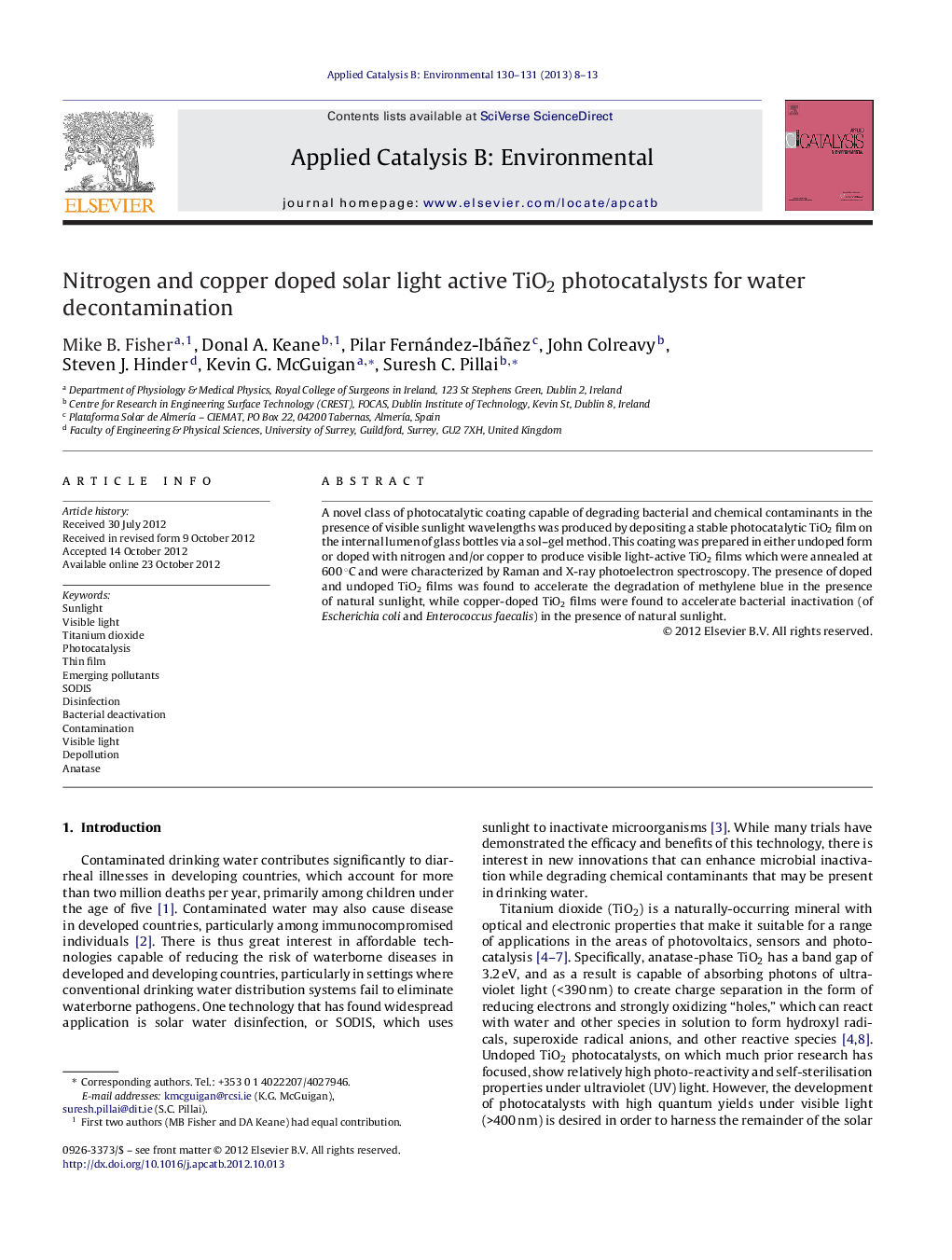| Article ID | Journal | Published Year | Pages | File Type |
|---|---|---|---|---|
| 45810 | Applied Catalysis B: Environmental | 2013 | 6 Pages |
A novel class of photocatalytic coating capable of degrading bacterial and chemical contaminants in the presence of visible sunlight wavelengths was produced by depositing a stable photocatalytic TiO2 film on the internal lumen of glass bottles via a sol–gel method. This coating was prepared in either undoped form or doped with nitrogen and/or copper to produce visible light-active TiO2 films which were annealed at 600 °C and were characterized by Raman and X-ray photoelectron spectroscopy. The presence of doped and undoped TiO2 films was found to accelerate the degradation of methylene blue in the presence of natural sunlight, while copper-doped TiO2 films were found to accelerate bacterial inactivation (of Escherichia coli and Enterococcus faecalis) in the presence of natural sunlight.
Graphical abstractSchematic diagram of bacterial decontamination using visible light active catalyst.Figure optionsDownload full-size imageDownload as PowerPoint slideHighlights► A stable photocatalytic sun-light-active TiO2 (VLAT) coating has been developed. ► Enhanced photocatalytic activity of coated bottles was observed. ► Visible light activated accelerated the degradation of methylene blue under natural sunlight. ► Doped TiO2 films accelerated bacterial (e.g. E. coli) inactivation under natural sunlight.
